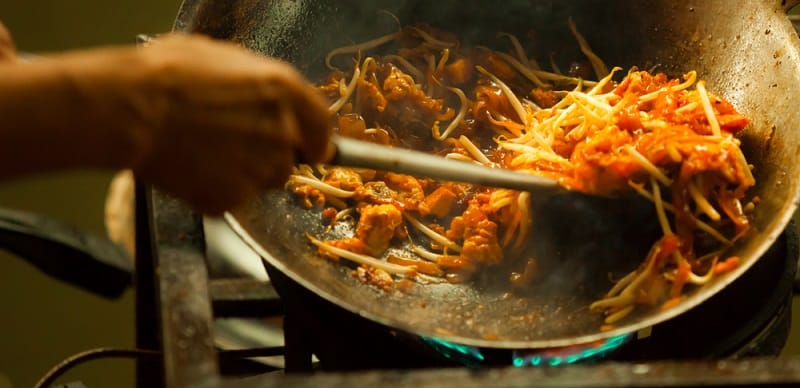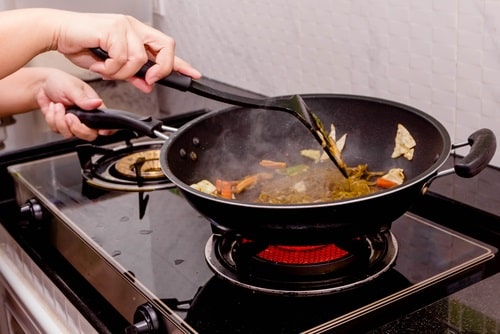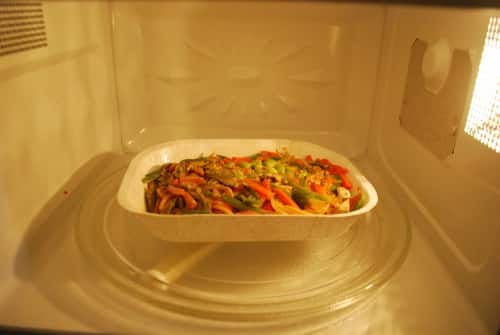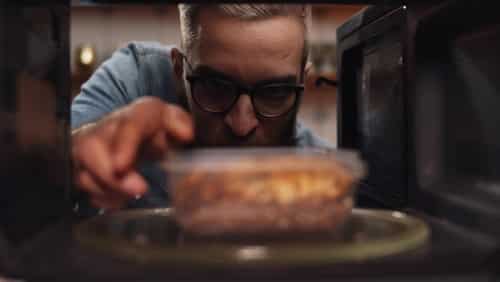
DISCLOSURE: This post may contain affiliate links, meaning when you click the links and make a purchase, I receive a commission. As an Amazon Associate I earn from qualifying purchases.
Thai food is one of the world’s favorite types of ethnic cuisine.
Whether you’re sitting down in an exclusive high-end Thai restaurant or enjoying this beloved street food served traditionally, pad thai is something we can’t get enough of.
It’s also a meal that takes time and careful attention to put together at home, which makes keeping leftovers or ordering extra a must.
Fortunately, the gluten-free taste sensation, pad thai, is healthy and easy to reheat.
The fusion of five distinctive flavors and the so-satisfying rice noodles gives you a complete range of nutrition.
Meat, vegetables, tofu, and eggs come together in a stir-fry that uses an unmistakable sauce made from shrimp and spices.
As any fan will tell you, reheating some the next day makes for a great meal, but you’ve got to know what you’re doing.
There’s a right way to reheat pad thai, and we’re going to show you precisely what to do.
How to Reheat Pad Thai?
If you’ve ever decided to microwave leftover pad thai, then you know all too well the dried-out, sticky mess that often becomes of your food.
Rice noodles become sticky when improperly reheated because they contain a high concentration of starch.
As you heat your dish in the microwave, the moisture evaporates, leaving you with dry, sticky, gooey pad thai.
However, follow our instructions for reheating pad thai, and you’ll never ruin a meal again.
Reheating Pad Thai Perfectly
We’re going to show you all of the ways to reheat pad thai, giving instructions for stovetop, microwave, and oven reheating. Follow these steps to enjoy the perfect pad thai even after warming.
- Reheat on the stove

Heat a saucepan coated with oil. Put in your pad thai and sprinkle over a little water.
Never add more water than is necessary to stop the dish from sticking, or you’ll end up with flavorless, watery noodles.
Ensure that it reheats and sautés evenly, adding more water and perhaps a little more oil gradually. Remove at the moment that it’s hot enough to eat.
- Microwave
The key to reheating pad thai in the microwave is to sprinkle just enough water to prevent dryness and to microwave them covered.
Never microwave for a prolonged period without first checking the moisture of your noodles in between.
Add a little water to the dish and microwave in bouts, stirring to ensure the noodles are evenly reheated.
Never microwave at a high temperature. Instead, microwave your pad thai on medium for longer.

A failsafe way to reheat pad thai in the microwave is to put your leftovers or frozen meal in a microwave dish with a vent. Alternatively, use a clean, empty plastic container with a cover.
Put an ice block on top, close up the dish, pop a few steam holes if it’s a reused container, and microwave on medium for roughly two minutes.
Another reliable way to reheat pad thai in the microwave is to dish up your noodles and cover them with a damp paper towel.
Microwave on high for 30 seconds before checking to ensure that the paper towel is still moist.
Repeat, wetting, or replacing the paper towel whenever necessary, until your food is piping hot and ready to eat.
- Reheat in the oven

Baking rewards you with great pad thai but takes longer than other reheating methods. To warm up pad thai, preheat your oven to 225°C or 437°F.
Lightly coat the casserole dish in oil. Evenly distribute the pad thai in the dish, sprinkle over a little water, and cover completely with tin foil. Once preheated, bake for roughly 20 minutes.
Want The Best Reheated Pad Thai?
If you’re making pad thai at home, make extra sauce to make your reheated noodles taste almost as good as fresh.
Reheating everyone’s favorite Thai food with its own sauce freshens up the meal, preventing drying out while not thinning out the flavor like water.

The best way to reheat pad thai would be in a wok, using sauce from the original recipe but try any of these methods to get a taste that’s as good as it gets at home.
[amazon box=”B00PUZT9MU”]